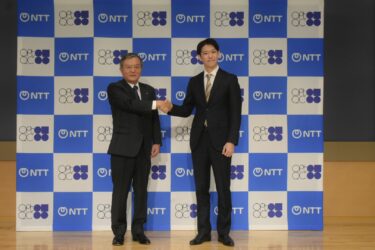With the still-pressing global boom of Artificial Intelligence (AI), industries from around the world have leveraged these emerging technologies for simplification, cost reduction, efficiency and personalization. In this, those of security and surveillance have been amongst those leading the charge, embracing AI to enhance accuracy, efficiency, while aiming towards proactivity in the form of threat prevention.
Regardless, feedback from industry professionals seeking to improve the efficacy of video processing abounds. Since surveillance cameras became widely accessible in the 1990s for security and detection, image quality and delays in evaluation have been a primary concern. Similarly, since their widespread and popular commercialization starting in the 2010s, modern drones have been constrained by their miniaturist design, oftentimes lacking space to carry appropriate equipment to perform accurate surveillance.
AI, however, has posed a further revolution. With the rise of intelligent surveillance, security and detection have moved from passive recording to active analysis of video footage, which has allowed for the identification of suspicious activities and the provision of proactive security measures in both public and private spheres. Regardless, this emerging AI technology is also constrained by height limits, computational complexity, and their reliance on cloud computing.
Now, this technology will be enhanced by a new AI inference chip for real-time 4K video processing, the first in the world to perform with low power at the edge.
NTT’s bet on AI-backed inference technology
Unveiled at NTT’s Upgrade 2025 conference in San Francisco, California, the AI Inference Chip for Real-Time 4K Video Processing enables real-time AI interface processing from ultra-high-definition video on edge devices and terminals with strict power constraints, and was inspired by the company’s goal to expand supported inference models and accelerate AI capabilities. In fact, this technology can be used with a power consumption of less than 20 watts, similar to a basic IP camera equipped with night vision of pan-tilt-zoom capabilities.
When this LSI is installed on a drone, for instance, it can detect individuals or objects from as high as 150 meters (492 feet) above the ground, while conventional real-time AI video interfacing would be limited to roughly 30 meters (98 feet). Professionals can now reduce labor and costs, as the chip allows for operation beyond the operator’s line of sight, a traditional setback in drone surveillance technology.
NTT is planning to commercialize this technology in late 2025 through its operating company NTT Innovative Devices Corporation. In the meantime, however, researchers are focusing on the application of this LSI to the data-centric infrastructure of the Innovative Optical and Wireless Network (IOWN) initiative, furthering its mission of addressing the challenges of modern network infrastructure, including issues of scalability, performance, and sustainability.
Wider implications
With NTT’s newest development, security cameras will no longer have to send the footage they record to the cloud, cutting companies’ time costs and monetary expenses significantly, while simultaneously addressing key sustainability concerns that have recently emerged from the energy and water cloud data centers consume.
In terms of security itself, however, the chip enables faster and on-site threat detection, while also enhancing data privacy, since video never leaves the device without a clear need.
For drones, this technology allows for more inclusive and comprehensive data collection and analysis, while also significantly improving the mobility, endurance and autonomy of the devices.
Beyond the security and surveillance industries, however, the chip poses smoother content creation, wider accessibility in remote areas, and a bet on sustainability and energy efficiency.
“The combination of low-power AI interfacing with ultra-high-definition video holds an enormous potential, from infrastructure inspection to public safety to live sporting events,” concluded Kazu Gomi, CEO and Research president at NTT.
Article by Salomé Beyer Vélez












